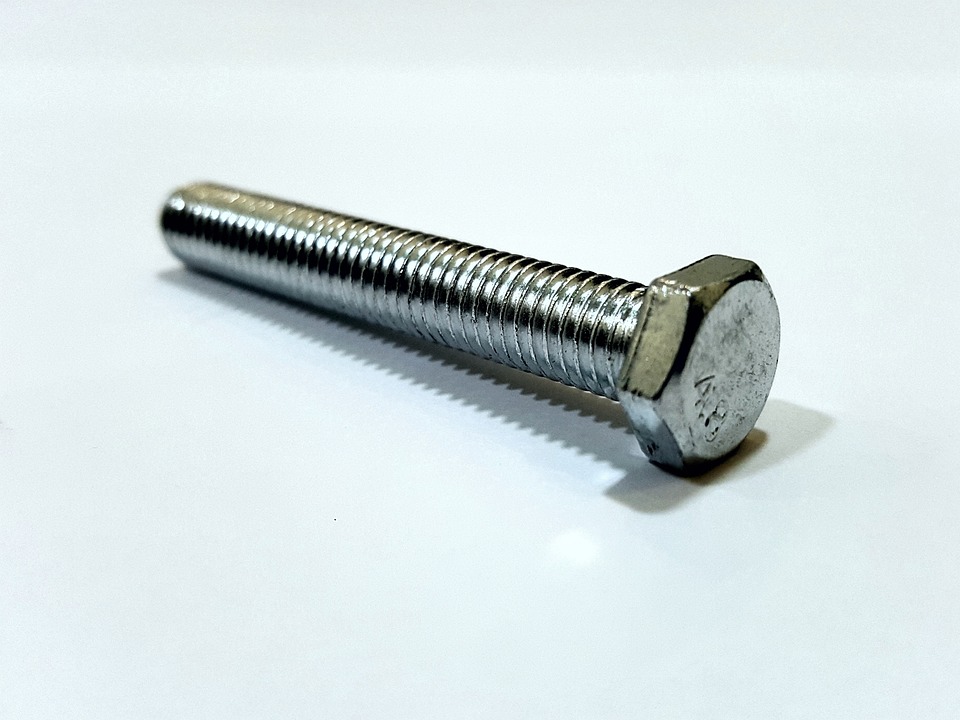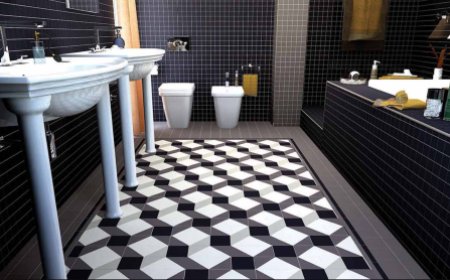How to Visit the New Orleans Historic Cabildo
How to Visit the New Orleans Historic Cabildo The New Orleans Historic Cabildo is more than just a building—it is a living archive of colonial power, revolutionary change, and cultural fusion that shaped the American South. Located on Jackson Square in the heart of the French Quarter, this iconic structure has served as a Spanish colonial government house, a U.S. district court, and the site of th
How to Visit the New Orleans Historic Cabildo
The New Orleans Historic Cabildo is more than just a building—it is a living archive of colonial power, revolutionary change, and cultural fusion that shaped the American South. Located on Jackson Square in the heart of the French Quarter, this iconic structure has served as a Spanish colonial government house, a U.S. district court, and the site of the Louisiana Purchase transfer in 1803. Today, it houses the Louisiana State Museum and stands as one of the most significant historical landmarks in the United States. For travelers, history enthusiasts, and cultural explorers, visiting the Cabildo offers an immersive journey into the layered past of New Orleans and the broader Gulf Coast region. This guide provides a comprehensive, step-by-step roadmap to planning, navigating, and maximizing your experience at the Cabildo—ensuring you leave with more than just photos, but a deeper understanding of its enduring legacy.
Step-by-Step Guide
Research and Plan Your Visit in Advance
Before setting foot on the cobblestones of Jackson Square, begin with thoughtful research. The Cabildo is not a casual drop-in attraction—it is a curated museum space with limited capacity and scheduled programming. Start by visiting the official Louisiana State Museum website to review current exhibitions, operating hours, and any special events or closures. The Cabildo is typically open Tuesday through Sunday from 9:00 a.m. to 5:00 p.m., with last admission at 4:15 p.m. It is closed on major holidays, including Thanksgiving, Christmas Day, and New Year’s Day. Avoid visiting on Mardi Gras day or during large festivals like Jazz Fest, when nearby streets are congested and parking becomes nearly impossible.
Consider the season. New Orleans experiences hot, humid summers and mild winters. If you’re visiting between June and August, plan your trip for early morning to avoid peak heat and crowds. Winter months (December–February) offer more comfortable temperatures and fewer tourists, making it ideal for a contemplative exploration of the exhibits.
Choose Your Transportation Method
The Cabildo is centrally located and easily accessible by multiple modes of transportation. If you’re staying within the French Quarter, walking is the most authentic and efficient option. The building sits directly across from St. Louis Cathedral and the Pontalba Buildings, making it a natural stop on any self-guided walking tour of Jackson Square.
For those arriving from outside the Quarter, the Regional Transit Authority (RTA) operates several bus lines that stop near the Cabildo. The Streetcar Line 1 (St. Charles Avenue line) stops at the Jackson and Canal stop, just a five-minute walk away. The Canal Street streetcar is particularly scenic, offering views of historic architecture and live jazz performances along the route.
If you’re driving, be aware that parking in the French Quarter is extremely limited. Public garages such as the Jackson Square Parking Garage (on Decatur Street) and the Royal Street Parking Garage are your best bets. Avoid street parking—many spots are reserved for residents, and violations are strictly enforced. Ride-sharing services like Uber and Lyft are reliable and drop off directly on Jackson Avenue, just steps from the entrance.
Purchase Tickets and Understand Admission
Admission to the Cabildo is included in the Louisiana State Museum’s multi-site pass, which offers access to five historic properties across New Orleans, including the Presbytère, the New Orleans Pharmacy Museum, and the Chalmette Battlefield. The single-site ticket for the Cabildo is $12 for adults, $6 for seniors (65+), and $6 for students with valid ID. Children under 12 enter free. The multi-site pass costs $20 for adults and $10 for seniors and students, and is valid for seven consecutive days.
Purchasing tickets online in advance is highly recommended. The museum’s website allows you to reserve timed-entry tickets, which helps manage crowd flow and ensures you won’t be turned away during peak hours. Timed tickets also grant you priority access, reducing wait times at the entrance. If you’re visiting multiple museum sites, the multi-site pass offers significant savings and flexibility. Keep your ticket receipt—many locations offer discounts on gift shop purchases with proof of admission.
Enter the Building and Orient Yourself
The Cabildo’s grand entrance is marked by a wide staircase flanked by wrought-iron railings and flanked by two historic cannons. As you ascend, notice the architectural details: the thick limestone walls, the arched windows, and the original Spanish colonial stonework. Once inside, the lobby features a large information desk staffed by knowledgeable volunteers and museum educators.
Take a moment to pick up a free printed map of the building’s layout and exhibit locations. The Cabildo spans three floors, each dedicated to a different historical era. The ground floor houses the main exhibit hall, “Louisiana: A History,” which traces the region’s journey from pre-colonial Native American societies through French and Spanish rule, the Louisiana Purchase, the Civil War, and into the modern era. The second floor features rotating exhibits, often centered on art, music, or specific cultural movements. The third floor is reserved for research archives and administrative offices, and is not open to the general public.
Before diving into the exhibits, take note of the restrooms, which are located on the ground floor near the gift shop. There is no food or drink allowed inside the galleries, but water fountains are available. A small seating area near the exit allows visitors to rest and reflect before continuing their exploration of Jackson Square.
Explore the Ground Floor: “Louisiana: A History”
This is the heart of the Cabildo experience. The ground floor exhibit is a masterclass in narrative curation. The display begins with artifacts from the indigenous peoples of the region—pottery, tools, and ceremonial objects from the Mississippian and Natchez cultures. A large interactive map shows the migration patterns and territorial claims of Native nations before European contact.
As you move through the exhibit, you’ll encounter original documents from the Spanish colonial period, including handwritten decrees signed by governors and maps drawn by French cartographers. One of the most compelling artifacts is the original 1803 Louisiana Purchase treaty, displayed under climate-controlled glass. A digital touchscreen allows you to zoom in on signatures, including those of Robert Livingston and James Monroe, and read translations of the treaty’s clauses in multiple languages.
Another highlight is the replica of the courtroom where the 1811 German Coast Uprising trial took place—the largest slave revolt in U.S. history. Audio recordings of historical reenactments play softly in the background, immersing you in the tension of the moment. The exhibit doesn’t shy away from difficult truths; it presents slavery, displacement, and resistance with unflinching clarity.
Don’t miss the section on Creole culture. Here, you’ll find period clothing, musical instruments like the diatonic accordion, and recipes from early New Orleans kitchens. A multimedia installation lets you hear French, Spanish, and Creole dialects spoken by descendants of early settlers, offering a rare auditory connection to the past.
Ascend to the Second Floor: Rotating Exhibits
The second floor changes quarterly, ensuring repeat visitors always find something new. Recent exhibitions have included “Jazz and the City: The Sound of New Orleans,” featuring original instruments from Louis Armstrong and Jelly Roll Morton; “Voodoo in the Crescent City,” which explores the spiritual traditions of African diaspora communities; and “The Art of the Mardi Gras Indian,” showcasing hand-beaded suits worn during Carnival.
Each exhibit is accompanied by detailed wall panels, video interviews with cultural practitioners, and hands-on elements such as touch-screen timelines or scent stations that replicate historical aromas—like bayou moss, candle wax, and roasted coffee beans from 19th-century cafés.
During your visit, check the museum’s digital kiosks for current and upcoming exhibits. If you’re particularly interested in a theme—say, music or religion—ask a staff member for a recommended route through the second floor. They often have unpublished insights into lesser-known artifacts or upcoming acquisitions.
Visit the Gift Shop and Archive Access
Before exiting, spend time in the Cabildo’s gift shop, which is one of the most thoughtfully curated museum stores in the country. Unlike typical souvenir shops, this space offers high-quality reproductions of historical documents, books by local historians, handmade crafts by New Orleans artisans, and rare vinyl recordings of early jazz and blues. Many items are exclusive to the museum and cannot be found elsewhere.
If you’re a researcher or student, inquire about access to the Louisiana State Museum Archives, located on the third floor. While not open for casual browsing, qualified individuals can request appointments to view original manuscripts, land deeds, and personal letters from the 1700s and 1800s. Access requires a written request submitted at least five business days in advance, and appointments are granted on a case-by-case basis.
Continue Your Journey: Nearby Attractions
After your visit, remain on Jackson Square to fully appreciate the context of the Cabildo. To your left is St. Louis Cathedral, the oldest continuously operating cathedral in the United States. To your right is the Presbytère, another Louisiana State Museum site that explores Mardi Gras and Carnival traditions. The two buildings mirror each other architecturally, creating a symmetrical frame around the cathedral.
Take a moment to sit on one of the park benches and watch the street performers—jazz musicians, living statues, and storytellers—bring the square to life. If you’re hungry, head to Café du Monde, just a block away, for beignets and café au lait. Or, for a more upscale experience, try Commander’s Palace, a historic Creole restaurant with a courtyard garden that dates back to 1893.
Best Practices
Arrive Early to Avoid Crowds
Weekend mornings, especially between 9:30 a.m. and 11:30 a.m., are the busiest. Arriving at opening time gives you the best chance to explore exhibits without crowds. Weekday afternoons (after 2:00 p.m.) are often quieter, making them ideal for photographing artifacts or reading exhibit text without distraction.
Respect the Artifacts and Environment
The Cabildo houses irreplaceable documents, textiles, and objects that are hundreds of years old. Never touch glass cases, even if they appear sealed. Avoid using flash photography, even if not explicitly prohibited—it can damage sensitive materials over time. Keep your voice low; this is a place of reverence as much as education.
Wear Comfortable Footwear
The building’s original floors are made of wide-plank hardwood and uneven stone. High heels can be hazardous, and sandals offer little support for prolonged standing. Opt for closed-toe shoes with good grip. The museum is fully ADA accessible, with elevators and ramps available, but the historic nature of the structure means some doorways are narrow and flooring may have slight slopes.
Engage with Staff and Volunteers
The museum’s docents and volunteers are often retired historians, educators, or descendants of early New Orleans families. They are not just information providers—they are storytellers. Ask them about the provenance of an object, the context of a document, or a personal memory tied to the building. Their insights add layers of meaning you won’t find in printed labels.
Use the Museum’s Digital Resources
Before or after your visit, explore the Louisiana State Museum’s online collections portal. Over 10,000 artifacts from the Cabildo and other sites are digitized and searchable by keyword, date, or cultural group. You can zoom in on handwritten letters, listen to oral histories, and download high-resolution images for personal or educational use. This is especially helpful if you’re planning a school project or academic paper.
Time Your Visit Around Programming
The Cabildo hosts regular lectures, book signings, and musical performances. These events are often free with admission and occur on weekends. Check the museum’s calendar before your visit. A Saturday afternoon lecture on Creole cuisine or a jazz trio performing in the courtyard can elevate your experience from a museum tour to a cultural immersion.
Bring a Notebook or Journal
Many visitors leave inspired but forget key details. Bring a small notebook to jot down names, dates, or quotes that resonate with you. You might find yourself returning to the museum later to research a particular artifact or figure you encountered. Writing things down deepens retention and personal connection.
Tools and Resources
Official Louisiana State Museum Website
The primary resource for planning your visit is lasm.org. Here you’ll find real-time updates on hours, ticket prices, current exhibits, and event calendars. The site also offers downloadable educational packets for teachers and parents, including pre-visit activities and post-visit discussion questions.
Google Arts & Culture: Cabildo Collection
Google’s partnership with the Louisiana State Museum offers a virtual tour of the Cabildo’s most significant artifacts. Using Street View technology, you can “walk” through the galleries from anywhere in the world. High-resolution images allow you to read faded ink on 18th-century ledgers and examine the stitching on a 1790s French military uniform. This is an excellent tool for remote learners or those planning a future visit.
Mobile Apps for Self-Guided Tours
Download the “New Orleans Historic Sites” app by the French Quarter Festival. It includes GPS-triggered audio tours of Jackson Square and its surrounding landmarks. When you approach the Cabildo, the app automatically plays a 10-minute narration covering its architecture, political history, and cultural impact. The app is free, offline-capable, and available in English, Spanish, and French.
Recommended Books
For deeper context, consider these authoritative works:
- “The Cabildo: The Story of New Orleans’ First City Hall” by Joseph G. Tregle Jr.
- “Louisiana: A History” by William C. Davis
- “Creole: The History and Legacy of France’s Lost Empire in the Americas” by Susan Eva O’Donovan
These titles are available in the museum gift shop and through local bookstores like Garden District Book Shop or Octavia Books.
Maps and Walking Tour Guides
Free printed maps are available at the Cabildo’s entrance, but you can also download the “French Quarter Walking Tour” PDF from the New Orleans Tourism Marketing Corporation’s website. This guide includes 15 key sites, estimated walking times, and historical anecdotes for each stop. Use it to plan a full-day itinerary that includes the Cabildo, the Presbytère, the St. Louis Cemetery No. 1, and the New Orleans Jazz Museum.
Language and Translation Tools
Many documents in the Cabildo are in French or Spanish. Use your smartphone’s translation app (Google Translate or Microsoft Translator) to scan and translate text on exhibit labels. The app works best with clear, printed text and can even translate handwritten documents if the lighting is good. For more complex historical terms, consult the museum’s glossary, available on their website.
Real Examples
Example 1: The High School History Class
A group of 11th-grade students from Baton Rouge visited the Cabildo as part of their U.S. History curriculum. Their teacher, Ms. Ramirez, had them complete a pre-visit assignment: research one figure involved in the Louisiana Purchase. During the tour, students were given a scavenger hunt checklist with clues like “Find the signature of the Spanish governor who signed the transfer documents” or “Locate the map showing the original boundaries of the Louisiana Territory.” After the visit, each student presented a 5-minute oral report on their chosen figure using photos taken in the museum. The experience transformed abstract textbook concepts into tangible connections—students later wrote essays describing how the Purchase affected their own communities.
Example 2: The Genealogist
David Chen, a retired engineer from Seattle, traveled to New Orleans to trace his Creole ancestry. His great-great-grandmother was listed in a 1812 census as a free woman of color living on Royal Street. With the help of the museum’s archivist, he accessed digitized parish records and land deeds that confirmed her property ownership—a rare occurrence for women of color at the time. He later published a family memoir titled “The House on Royal Street,” which includes photographs of the Cabildo’s original court records. He now donates copies to the museum’s education program.
Example 3: The International Tourist
Marie-Louise Dubois, a professor of colonial history from Lyon, France, visited the Cabildo while on a sabbatical in the U.S. She had studied the Louisiana Purchase in university but had never seen the original treaty. “Seeing the ink still visible on the parchment,” she said, “was like touching the moment history changed.” She returned twice during her stay—once with her students, and again to photograph the Spanish colonial courtroom for a documentary she was producing. Her film, “The Weight of Paper,” was later screened at the Sorbonne.
Example 4: The Local Resident
For many New Orleanians, the Cabildo is more than a tourist attraction—it’s a civic landmark. On the 200th anniversary of the Louisiana Purchase, hundreds of residents gathered on the steps of the Cabildo for a community ceremony. Elders recited Creole poetry, children performed traditional drumming, and a reenactor read the treaty aloud in French, Spanish, and English. For these residents, the Cabildo is not a relic—it’s a living symbol of identity, resilience, and cultural continuity.
FAQs
Is the Cabildo wheelchair accessible?
Yes. The Cabildo has full ADA compliance, including elevators to all public floors, accessible restrooms, and ramps at all entrances. Wheelchairs are available upon request at the front desk.
Can I take photos inside the Cabildo?
Yes, non-flash photography is permitted for personal use. Tripods and professional equipment require prior written permission from the museum’s media coordinator.
Are guided tours available?
Yes. Free guided tours depart from the lobby every hour on the hour, Monday through Sunday. Each tour lasts approximately 45 minutes and is led by a trained docent. No reservation is needed—just arrive a few minutes early.
How long should I plan to spend at the Cabildo?
Most visitors spend between 1.5 to 2.5 hours. If you’re deeply interested in history or plan to read all exhibit text, allow up to three hours. The rotating exhibits on the second floor often warrant additional time.
Is the Cabildo open on holidays?
No. The Cabildo is closed on New Year’s Day, Easter Sunday, Thanksgiving Day, Christmas Eve, and Christmas Day. It may also close during severe weather events like hurricanes.
Can I bring a stroller?
Yes. Strollers are permitted throughout the building. There are no narrow corridors or stairs that restrict access.
Are there audio guides available?
Yes. Free audio guides in English, Spanish, and French are available at the information desk. Each device includes 20 curated commentary tracks keyed to specific exhibits. Headphones are provided.
What’s the best time of year to visit?
October through April offers the most pleasant weather and smaller crowds. Summer months are hot and humid, with frequent afternoon thunderstorms. Avoid visiting during Mardi Gras, Jazz Fest, or Halloween weekend, as the French Quarter becomes extremely crowded.
Can I bring food or drinks into the museum?
No. Food and beverages (except water in sealed containers) are not permitted in the galleries. There are picnic areas and cafes nearby.
Is there parking nearby?
Yes. The Jackson Square Parking Garage (on Decatur Street) and the Royal Street Parking Garage are the closest public options. Metered street parking is limited and often restricted.
Conclusion
Visiting the New Orleans Historic Cabildo is not merely a sightseeing activity—it is an act of historical communion. Standing within its walls, you walk the same floors as governors, revolutionaries, merchants, and enslaved people whose lives shaped the destiny of a continent. The Cabildo does not simply display history; it invites you to feel its weight, hear its echoes, and understand its relevance to the present.
By following the steps outlined in this guide—from planning your transportation and purchasing tickets, to engaging with exhibits and respecting the space—you transform a simple visit into a meaningful encounter with the past. Whether you’re a student, a scholar, a traveler, or a local resident, the Cabildo offers something profound: the chance to see how the decisions of centuries ago still ripple through the streets, music, food, and language of New Orleans today.
As you leave the building and step back onto Jackson Square, pause for a moment. Look up at the cathedral’s spires, listen to the distant strains of a trumpet, and feel the sun on your skin. You are not just visiting a museum—you are standing at the crossroads of history, where the past is not gone, but alive.




















